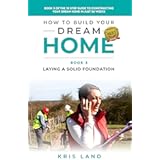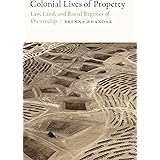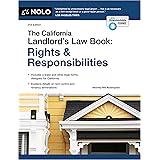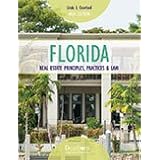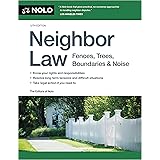As highlighted in the video above, the landscape of real estate investment is undergoing a significant transformation. Traditional strategies, such as house flipping and wholesaling, are increasingly facing headwinds, leading many seasoned investors to seek more stable and rewarding avenues for wealth creation. This shift necessitates a re-evaluation of current approaches, prompting investors to consider emerging opportunities that promise both substantial financial returns and greater consistency.
Consequently, the focus is increasingly turning towards sectors underpinned by robust demographic trends. One such sector, the Assisted Living industry, particularly within the specialized niche of luxury Assisted Living Mansions, stands out as a powerful alternative. This segment offers a compelling combination of high demand, strong cash flow, and significant long-term real estate appreciation, presenting a potent pathway for investors accustomed to the rigors of property development and management.
The Shifting Sands of Real Estate Investment
For years, real estate investing, especially house flipping, served as a dynamic engine for capital generation. Many investors, including the speaker in the video, built entire businesses around acquiring, renovating, and selling properties. The speaker’s journey, starting in 2011 and evolving into a full-time flipping operation by 2014, saw his team rehabbing and wholesaling an impressive volume of 25-30 houses annually, totaling around 200 properties over eight years. While this activity generated substantial revenue, much of it was reinvested into the business, leaving limited opportunities for significant personal wealth accumulation beyond a few rental properties, which often came with their own set of management headaches and modest returns, sometimes as low as $300 to $1,000 per month.
The current market, however, tells a different story. Deal flow for traditional flipping, wholesaling, and even multifamily properties has become “slim to none,” marked by fierce competition and volatile conditions. Investors are experiencing increased marketing expenses, with campaigns involving direct mail, pay-per-click, cold calling, and door-knocking, yielding diminishing returns as markets fluctuate. Furthermore, issues such as low appraisals and demanding sellers frequently erode anticipated profit margins, turning what seemed like a lucrative $40,000-$80,000 deal into a break-even scenario or even a loss after accounting for teams and commissions. This inherent inconsistency and high operational drama have prompted a widespread search for more reliable and scalable investment models, directly addressing the pain points of sustained effort with often inconsistent net gains.
The Unmissable Demographic Opportunity: Baby Boomers
At the heart of the new investment frontier lies an undeniable demographic imperative: the aging Baby Boomer generation. Comprising a massive segment of the population, Baby Boomers, currently aged 65 to 80 and beyond, are entering the phase of life where they increasingly require various forms of assisted living and specialized care. This demographic phenomenon is not a temporary trend but a sustained wave, projected to fuel demand in the senior care sector for the next 20 to 25 years. Importantly, this generation holds significant capital, making them a prime market for high-quality, amenity-rich living solutions that prioritize comfort, care, and dignity.
The supply side of this equation reveals a stark imbalance. The construction of new assisted living facilities is drastically lagging behind the accelerating demand. Depending on the specific statistics, the industry is currently building at only 25-33% of the required capacity year over year. This severe undersupply, coupled with the ongoing population increase, creates an unprecedented opportunity for investors to fill a critical gap in the market. Consequently, the focus shifts from conventional real estate plays to those directly addressing the needs of this affluent and growing senior population, presenting a robust, almost recession-proof investment thesis.
Redefining Senior Living: The Assisted Living Mansion Model
The speaker’s innovative approach, termed “Assisted Living Mansions” or “Memory Care Mansions,” represents a radical departure from conventional senior living models. Unlike the problematic small Residential Assisted Living (RAL) facilities, often characterized by cramped quarters and inadequate staffing, or the large, impersonal “big box” facilities known for their sometimes “smelly” environments and high resident-to-staff ratios, this model re-imagines senior care entirely. It centers on custom-built, luxury residences that prioritize intimate, high-quality care within a dignified and aesthetically pleasing setting.
Specifically, these are 10,000 square foot mansions, each meticulously designed to house 16 private rooms, complete with full private bathrooms. Beyond the individual living spaces, the mansions boast an array of luxury amenities rarely found in traditional facilities, including a library, a salon, and a dedicated chef who can tailor meals to individual preferences and dietary restrictions. Crucially, these facilities are equipped to provide comprehensive medical and personal care, including assistance with showering and toileting, medication management, physical and occupational therapy, hospice care, and specialized memory care for residents with dementia. This model effectively combines the high-level care of a large facility with the intimacy and personalized attention of a private residence, creating a desirable “boutique hotel” experience that stands in stark contrast to the outdated and often undesirable options currently dominating the market.
Financial Foundations: Unpacking the Profitability
The financial model underlying Assisted Living Mansions is designed for both exceptional cash flow and substantial long-term wealth accumulation, offering a compelling alternative to traditional real estate ventures. Each mansion is structured to generate significant top-line income, typically exceeding $100,000 per month, with optimal figures around $120,000 monthly. This revenue is derived from residents paying an average of $7,500 to $9,000 per month, a rate achievable across many regions, especially for end-of-life and memory care services.
After deducting all operational expenses, including staffing, management, and real estate costs, a single Assisted Living Mansion consistently nets approximately $40,000 per month for the owner. This translates into an impressive annual owner income of $400,000 to $500,000. Furthermore, the real estate component of this business provides a robust avenue for wealth building. A custom-built mansion, with all hard and soft costs, typically runs around $3 million to construct. However, upon completion, these properties often appraise for approximately $6 million – $5 million for the real property itself and an additional $1 million attributed to the value of the well-established operations company. This substantial appreciation, effectively doubling the initial investment value, is a powerful engine for building significant net worth, far surpassing the growth potential of individual rental properties.
Accessing the necessary capital for these projects is also strategically streamlined. SBA (Small Business Administration) loans play a critical role, funding a substantial portion of the project, including land acquisition, construction, reserves, working capital, furniture, fixtures, and equipment (FFE), and even interest during construction. This comprehensive financing typically requires only a 10-15% down payment, making it accessible to investors without requiring massive upfront personal capital. The key distinction here is that SBA loans are provided for businesses, not merely for real estate investments. Therefore, presenting the Assisted Living Mansion as an active business with a substantial real estate component is crucial for securing this favorable funding.
Active Management, Passive Wealth: A Dual Approach
The Assisted Living Mansion model is fundamentally an active business, necessitating engaged operational management rather than a purely passive investment stance. This distinction is critical because, as the speaker observes, many large corporate facilities that merely lease buildings and outsource operations frequently struggle, especially post-COVID. These models often fail to sustain high occupancy or deliver quality care, leading to high turnover in management companies and inconsistent performance.
The speaker’s success stems from integrating real estate development with hands-on operational leadership. While the real estate component builds long-term passive wealth through equity appreciation, the operations company, which manages staff and provides care, is inherently active. This active involvement ensures that the high standards of care, which directly drive reputation and occupancy, are maintained. For instance, the speaker and his wife dedicated approximately a year to intensively learning the operational intricacies, hiring an experienced big-box medical manager, and implementing robust systems for everything from medical care to dementia management. This initial active phase allowed them to build a competent team, including caregivers, med techs, and chefs, ultimately stabilizing operations. After this critical first year, their time commitment significantly reduced, moving from full-time to three days a week, then one day a week, and eventually settling at a highly leveraged 2-4 hours per week for managing what became an exceptionally efficient and profitable enterprise. This blend of active initial setup and eventual operational leverage is what allows for both consistent cash flow and long-term asset growth.
Navigating the Industry: From Real Estate to Senior Care
For real estate investors accustomed to properties and profits, transitioning into senior care may seem daunting, particularly given the perceived requirement for medical expertise. However, the speaker’s experience demonstrates that a background in traditional real estate investing, coupled with a business-first mindset and a genuine commitment to care, can be a significant advantage. While neither the speaker nor his wife had prior medical experience, their strengths lay in raising capital, construction management, and deal structuring—all foundational skills in real estate development.
Their journey involved strategically addressing the knowledge gap by hiring an experienced medical professional, initially a manager from a large facility, and integrating them into their team with a profit-sharing agreement. This approach not only filled the immediate need for medical expertise but also created a collaborative learning environment. Furthermore, their lack of prior immersion in the assisted living industry proved to be an unexpected asset. Instead of adhering to outdated practices prevalent since the 1980s in many corporate facilities, they challenged every aspect of the traditional model, from building design to operations and marketing. By focusing on what residents (and their families, like the speaker’s own grandmother) truly desire—a beautiful, personalized, high-care environment—they innovated facilities that resonated deeply with the market. This fresh perspective, combined with thorough research into industry codes and best practices, led to the creation of a facility with a massive waitlist, proving that a businessperson’s approach, coupled with a genuine heart for care, can revolutionize an outdated industry.
Achieving Freedom: Time, Financial, and Beyond
The ultimate appeal of the Assisted Living Mansion model lies in its capacity to deliver both time freedom and significant financial freedom, addressing the core desires of many real estate investors. The consistent net income of $400,000-$500,000 per mansion annually, combined with a dramatically reduced work commitment after the initial stabilization phase, allows owners to achieve a lifestyle that was often elusive in the high-stress, unpredictable world of house flipping.
The speaker’s personal success exemplifies this potential: after an intensive first year of building systems and teams, his work hours dwindled to just a few per week, even while generating substantial income. This freedom permitted a period of “chilling” for two years before actively pursuing further expansion. The scalability of the model allows for building a “neighborhood” of these mansions, creating a portfolio that generates multi-seven-figure yearly cash flow. For instance, the speaker’s current expansion includes Phase 1, adding 32 beds (for a total of 48 beds) in Georgetown, Texas, with Phase 2 planning for two more mansions on eight acres. This strategic growth further amplifies the wealth-building trajectory, with the potential to add more than “eight figures” to personal net worth after accounting for debt and investor payouts. This long-term wealth creation, coupled with the consistent cash flow from operations, provides a comprehensive solution for investors seeking not just financial success but a sustainable, high-quality life.


